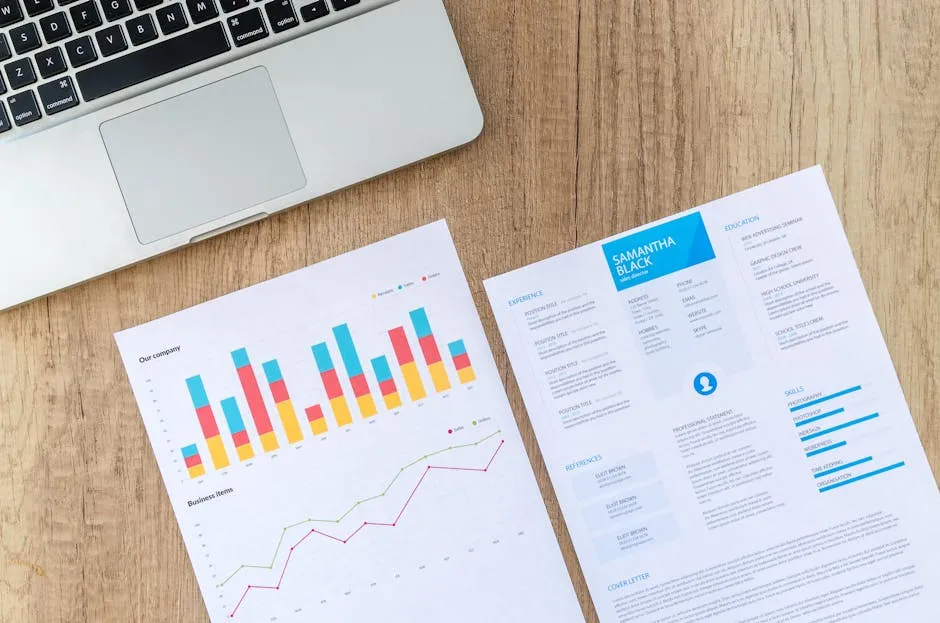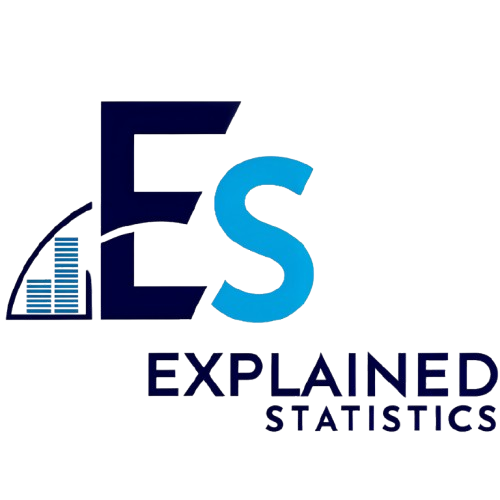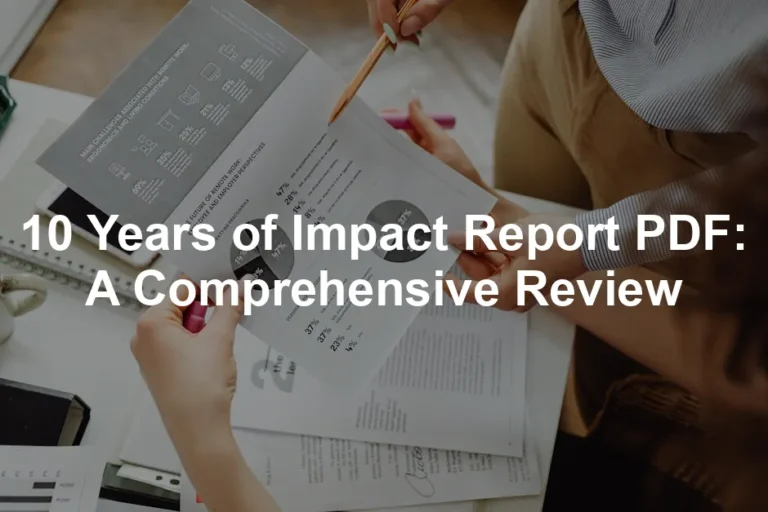Introduction
Statistics internships are becoming essential in today’s job market. Why? Because almost every industry needs individuals who can analyze data and derive actionable insights. Whether in finance, healthcare, or technology, statistical skills are hot commodities. They help businesses make informed decisions. And guess what? Internships are the perfect way to bridge the gap between theory and practice.
For students and recent graduates, internships provide a golden opportunity to apply what you’ve learned in the classroom. They allow you to work on real-world problems, giving you invaluable experience. This experience not only enhances your resume but also boosts your confidence. You’ll find yourself in a unique position, combining academic knowledge with practical applications.
But that’s not all! Internships also open doors to networking opportunities. You’ll meet professionals in your field, which can lead to job offers down the line. Plus, who doesn’t love a chance to impress potential employers? With the right internship, you can showcase your skills and stand out from the crowd.
Speaking of skills, if you’re looking to sharpen your programming prowess, check out “R for Data Science by Hadley Wickham”. This book is a treasure trove for anyone looking to dive deep into data science with R! It’s like having a personal tutor guiding you through the world of data analysis, which is just what you need to ace that internship!
This blog post aims to be your comprehensive guide to statistics internships. We’ll explore the benefits of internship experiences, the requirements you need to meet, and how to navigate the application process. You’ll also discover various opportunities available in the statistics field. By the end, you’ll be armed with all the knowledge you need to embark on a successful internship journey. Let’s get started!

Understanding Statistics Internships
What is a Statistics Internship?
A statistics internship is a hands-on learning opportunity, typically offered to students or recent graduates. It allows participants to work within a professional setting, focusing on statistical analysis and data interpretation. These internships can last anywhere from a few months to a year, often coinciding with academic programs.
In today’s data-driven landscape, numerous industries are eager to host statistics interns. Finance companies rely on interns to analyze market trends. Healthcare organizations seek help in interpreting patient data to improve services. Tech firms look for interns to assist in data science projects, helping them innovate and stay competitive.
Internships can vary widely in focus. Some positions may concentrate on data collection, while others might emphasize data analysis or statistical modeling. Regardless of the specific tasks, the core goal remains the same: to provide interns with practical experience in applying statistical theories and methodologies.
Students specializing in mathematics, statistics, or data science will find that internships enhance their academic learning. They equip interns with essential skills like data visualization and proficiency in programming languages such as R and Python. Ultimately, statistics internships are a stepping stone into the professional world, bridging academic knowledge with industry practice.
And if you’re looking to master Python, don’t miss out on “Python for Data Analysis by Wes McKinney”. It’s a must-have for anyone serious about data analysis. This book will take you from a beginner to a data wizard faster than you can say “data-driven decisions!”

Why Pursue a Statistics Internship?
Skill Development:
Statistics internships are treasure troves for skill development. Imagine honing your data analysis prowess while mastering programming languages like R and Python. These internships empower you to transform raw data into compelling stories. You’ll become proficient in statistical methods and data visualization techniques. Picture yourself impressing potential employers with your well-rounded skill set. It’s like giving your resume a turbo boost!
Real-World Applications:
Internships provide the perfect platform to apply theoretical knowledge. You’ll tackle practical problems that businesses face daily. Whether interpreting patient data in healthcare or analyzing market trends in finance, internships let you make a tangible impact. You’ll learn how to adapt classroom theories to real-world scenarios, sharpening your problem-solving skills. It’s a chance to see how data shapes decision-making processes in various industries.
Networking Opportunities:
Building a professional network is crucial in today’s job market. Internships allow you to connect with industry professionals. You’ll gain insight from experienced mentors who can guide your career path. Networking helps you discover hidden job opportunities. Plus, you might just meet your future boss at a coffee break! Strong professional relationships can lead to job offers and collaborations down the line. So, don’t underestimate the power of a good chat over coffee or lunch!
Speaking of coffee breaks, why not enjoy yours with a little flair? Check out this Coffee Maker that brews the perfect cup to fuel your data-driven dreams!

Types of Statistics Internships
Academic vs. Industry Internships
Academic internships often focus on research and may take place in university settings. They provide students with a chance to apply statistical theories in research projects. Interns collaborate with professors and contribute to ongoing studies. These positions generally emphasize learning, mentorship, and academic growth.
On the flip side, industry internships are all about real-world applications. They take place in corporate environments, where interns tackle practical issues. Companies seek interns to help with data analysis, market research, or product development. Interns often work on projects that directly impact the business, gaining hands-on experience. While both types of internships offer valuable learning experiences, industry internships typically offer a more fast-paced, results-driven environment.

Remote vs. On-Site Internships
The pandemic changed the way we work, giving rise to remote internships. These positions allow interns to work from the comfort of their homes. Remote internships offer flexibility, enabling you to balance work and personal commitments. Plus, you can apply for opportunities across the globe without relocating. However, they may lack the in-person mentorship and networking opportunities that come with on-site internships.
On-site internships, on the other hand, provide a vibrant environment. You’ll collaborate closely with colleagues and mentors, fostering relationships that can last a lifetime. The office atmosphere can enhance creativity and teamwork. However, commuting and relocation can be an added stressor. Ultimately, the choice between remote and on-site internships depends on your personal preferences and career goals. Both formats have their unique advantages and challenges, so consider what aligns best with your aspirations!

Internship Opportunities by Sector
Finance
In the finance sector, statistics interns often step into the role of data analyst interns. These positions are crucial for analyzing vast amounts of financial data. Interns are tasked with identifying trends, forecasting market movements, and providing insights to help companies make informed decisions. For example, Starbucks offers internships where students can work on data analytics, helping to refine business operations and drive revenue growth. Interns gain hands-on experience with financial modeling and statistical analysis, making them valuable assets to their teams.

Healthcare
The healthcare industry is another hotspot for statistics internships. Organizations like pharmaceutical companies actively seek interns to assist with data management and analysis. Interns might work on clinical trials, analyzing patient data to improve healthcare outcomes. For instance, Boehringer Ingelheim has internship opportunities focused on statistical methods in drug development. Interns here contribute to real-world applications of statistical theories, gaining insights into the critical role statistics play in patient care and medical research.

Technology
Technology is a booming field for statistics interns, especially in areas like data science and artificial intelligence. Companies are on the lookout for interns who can help analyze complex datasets to drive innovation. For example, AutoZone offers summer internships focused on data science, where interns can immerse themselves in machine learning and predictive analytics. Interns in tech not only sharpen their statistical skills but also learn to apply them to develop new algorithms and improve user experiences.

How to Prepare for a Statistics Internship
Building the Right Skillset
To stand out in a competitive field, aspiring interns need to build a robust skill set. Essential skills include proficiency in statistical software like R and Python. Familiarity with data visualization tools such as Tableau or Tableau Desktop Cookbook can also be a game changer. These tools help transform complex data into understandable visual formats, making insights easier to share.
To enhance your qualifications, consider enrolling in recommended courses. Online platforms like Coursera and edX offer courses in data analysis, machine learning, and statistical methods. Certifications can also add weight to your resume. For instance, a certification in data science or analytics can make your application more attractive to potential employers.

Crafting Your Resume and Cover Letter
Your resume is your first chance to impress, so make it count! Tailor your resume specifically for statistics internships. Highlight relevant coursework, projects, and any technical skills that align with the internship requirements. Use bullet points for clarity and keep it concise—employers often skim resumes quickly.
When crafting your cover letter, focus on key elements that showcase your passion for statistics. Start by addressing how your academic background aligns with the internship. Mention specific skills or experiences that make you a strong candidate. Don’t forget to express enthusiasm for the company and the opportunity to contribute to their projects. A well-crafted cover letter can set you apart from the competition and highlight your eagerness to learn and grow.

Finding Statistics Internship Opportunities
Job Search Strategies
Utilize Online Job Boards Effectively:
Online job boards are treasure troves for internship seekers. Websites like LinkedIn and Gradcracker offer a plethora of statistics internships. Set up job alerts to stay updated on new postings. Tailor your profile with relevant keywords to attract recruiters. Don’t forget to upload a polished resume!
Importance of Networking and Joining Relevant Professional Organizations:
Networking is your secret weapon. Engage with professionals in the field through platforms like LinkedIn. Attend industry conferences or webinars. Join organizations like the American Statistical Association. These connections can lead to internships that aren’t publicly advertised. Remember, it’s not just about who you know—it’s about who knows you!

Internships at Major Companies
When it comes to landing an internship, major companies offer some of the best opportunities. Let’s highlight a few notable programs.
Starbucks:
Starbucks runs a robust summer internship program. They seek data analyst interns to work in data analytics, insights, and business operations. Interns tackle real-world problems and gain hands-on experience in a fast-paced environment. The application process is straightforward: submit your resume and cover letter through their careers page.
Google:
Google is renowned for its data-driven approach. Their internships attract students eager to work with cutting-edge technology. The application process includes online assessments and interviews. Be prepared to showcase your analytical skills and passion for data!
Boehringer Ingelheim:
Boehringer Ingelheim offers internships in statistical methods related to drug development. Interns engage in literature reviews and apply statistical methods to real datasets. The application requires a CV, cover letter, and academic transcript. This internship is perfect for those interested in healthcare statistics.
American Express:
American Express provides summer internships focused on data science and finance. Interns work on projects that directly impact business decisions. The application process includes assessing technical skills and an interview round.
By targeting major companies and leveraging online platforms, you can increase your chances of landing a coveted statistics internship.

Utilizing University Resources
University career services are your best friends. These services guide you through the internship maze. They can help you polish your resume and prepare for interviews. Plus, they often have job boards filled with exclusive internship listings. Make an appointment and take advantage of their expertise!
Alumni networks are like hidden treasures. Reach out to former students in your field. They can provide insights and may even have leads on internships. Connecting with alumni can open doors you never knew existed. Don’t shy away from sending a friendly email or LinkedIn message. Who knows? They might just remember how tough it was and want to help!
Career fairs and workshops are essential stops on your internship journey. These events allow you to meet potential employers face-to-face. Bring your A-game and a stack of resumes. Workshops often provide valuable tips on interview techniques and resume writing. Attending these events can boost your confidence and give you a competitive edge. Remember, the more you network, the better your chances of landing that dream internship!

Success Stories: Real Intern Experiences
Case Studies of Past Interns
Meet Sarah, a statistics intern at a major healthcare provider. She worked on a project analyzing patient data to improve treatment outcomes. “It was eye-opening,” she said. “I saw firsthand how statistics can change lives.” Her work led to a 15% increase in patient satisfaction scores. Now, she’s a data analyst, helping shape healthcare policies.
Then there’s Jake, who interned at Starbucks. He focused on market trends and customer preferences. “I loved crunching the numbers,” Jake shared. “My analysis helped launch a new product line!” The experience not only boosted his resume but also landed him a full-time position at a leading consulting firm.
These stories aren’t just fluff—they show how internships can propel careers. Interns often tackle real projects that produce tangible results. The skills they gain are invaluable. From data analysis to teamwork, these experiences set the stage for future success.

Lessons Learned
Internships can be a rollercoaster ride. Many interns face challenges, such as time management and adapting to workplace culture. But fear not! There are strategies to navigate these bumps.
First, prioritize your tasks. Create a daily to-do list to stay organized. This simple act can save you from feeling overwhelmed. Next, don’t hesitate to ask for help. Your supervisors expect questions and value your eagerness to learn. They’ve been in your shoes!
Lastly, embrace feedback. Constructive criticism is a chance to grow. Take it with an open mind and use it to sharpen your skills. Remember, every challenge is a stepping stone to becoming a better professional.
FAQs
What qualifications are needed for a statistics internship?
To land a statistics internship, you typically need a strong academic background. Most companies require you to be enrolled in a degree program focused on mathematics, statistics, or data science. Relevant coursework in statistical analysis, programming, and data visualization is essential.
What software skills are important for a statistics internship?
Many internships seek candidates familiar with statistical software like R or Python. Being proficient in Excel is also a plus. Some positions might require advanced knowledge, so check specific job listings for additional requirements.
How can I make my application stand out?
Additionally, a keen interest in data and analytical thinking can set you apart. Employers look for candidates who demonstrate a passion for statistics and problem-solving skills. Tailoring your application to showcase these qualifications can increase your chances of landing that coveted internship!
And while you’re preparing, consider investing in some office supplies for your workspace. An Office Supplies Organizer Set can help keep your desk neat and tidy, making it easier to focus on those data sets!
Please let us know what you think about our content by leaving a comment down below!
Thank you for reading till here 🙂
For those looking to enhance their data skills, exploring the best data visualization tools for complex systems statistics can be invaluable.
Lastly, remember to take care of yourself while you’re working hard. A pair of Blue Light Blocking Glasses can help reduce eye strain from all those hours staring at screens. Your eyes will thank you!
All images from Pexels




